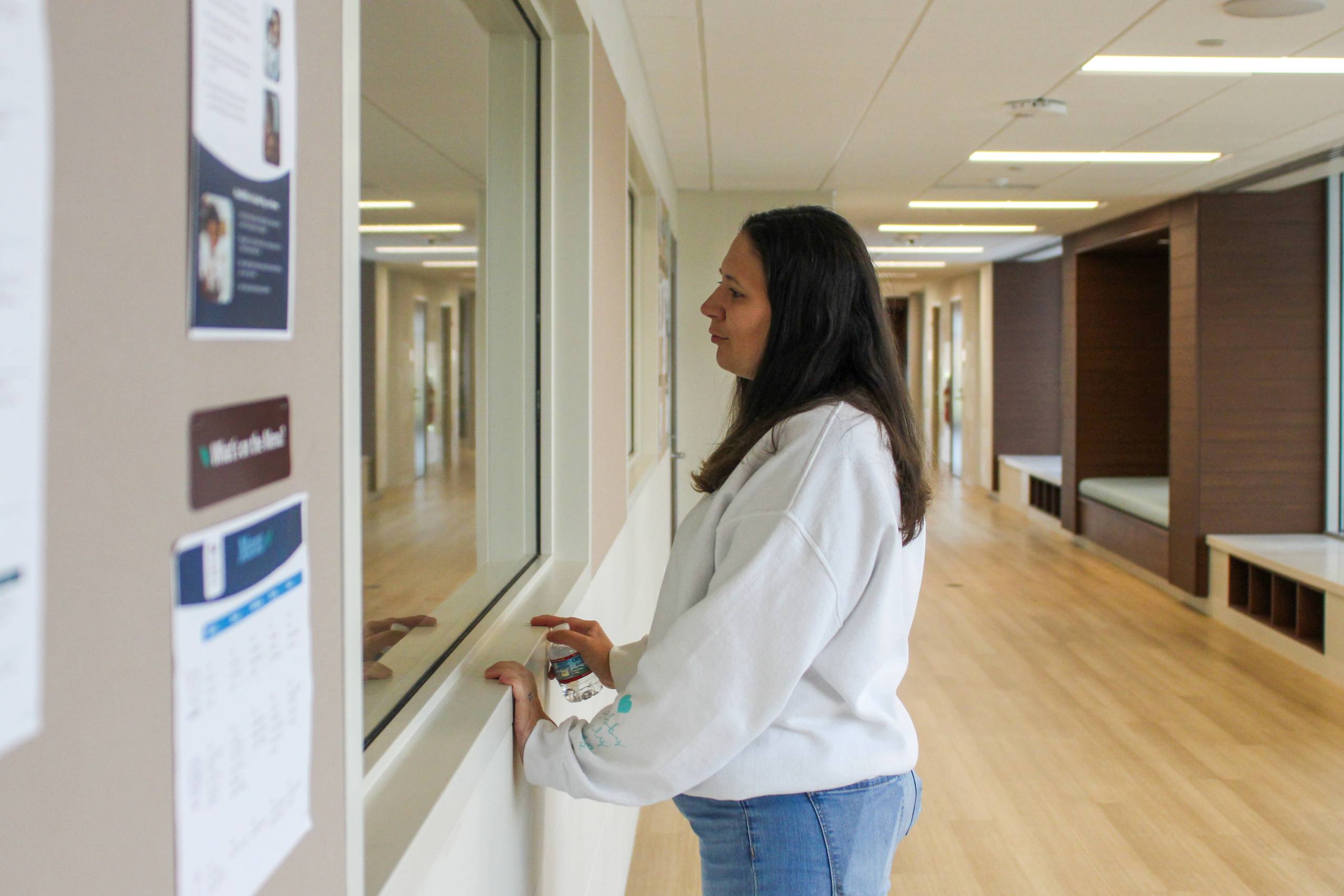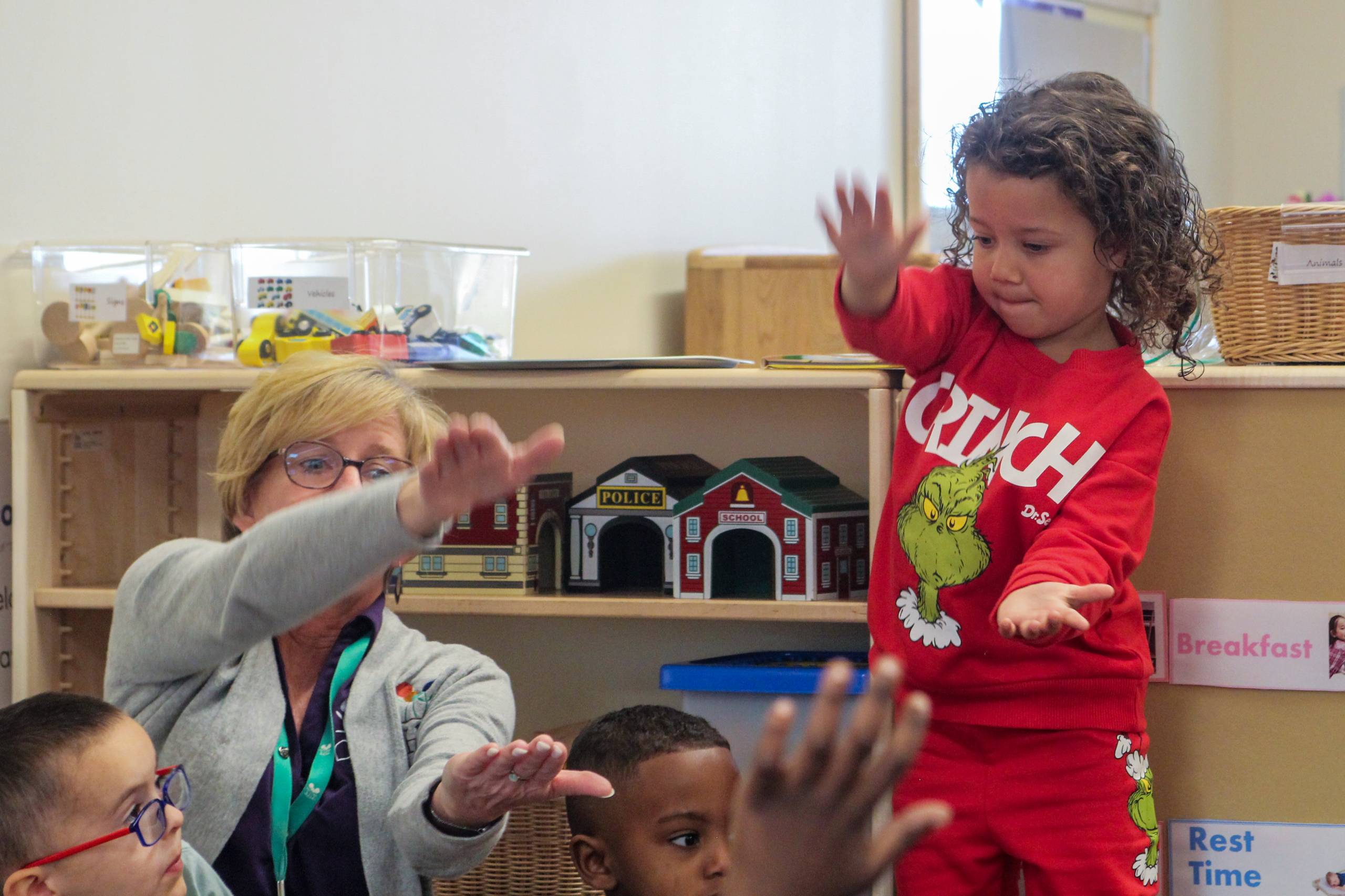There is free child care in America – if you meet the right philanthropist

[ad_1]
The Early Learning Center, located in a town that generates Willy Wonka vibes with street names like “Chocolate Street,” street lights shaped like Hershey’s Kisses and a faint scent of sweetness wafting through the air, is one of the latest examples of billionaires. Launching child care programs.
Similar efforts to provide free early care and learning are spreading across the country, including… ‘Montessori-inspired’ preschools in six states funded by Amazon founder and CEO Jeff BezosIn addition to several programs sponsored by hotel tycoon Harris Rosen in Orlando, Florida. In Pennsylvania, the Hershey Early Learning Program is one of what will eventually become six free early childhood education centers across Pennsylvania, at a cost of $350 million, funded by the International Monetary Fund. Milton Hershey School Fund. (Catherine Hershey Schools is a subsidiary of Hershey-based Milton Hershey Residential School.)
In a country with high childcare costs and a lack of available high-quality options, such initiatives provide a new opportunity to see the impact of free or heavily subsidized high-quality childcare – something that is already becoming the norm in many other countries. Rich and developed countries can do this in America. The fact that strong federal child care funding legislation has repeatedly been neglected by lawmakers means that foundation funding may be among the few—and quickest—ways to launch and test specific programs or approaches in the early years.
The hope is that private investment will eventually help the community “invest in something and move it forward and… help it move to the point where it has public attention,” as well as public money, said Rena Large, program director for Early. . Childhood Funders Collaborative (ECFC), an organization that helps philanthropists invest in the early years.

In the past few years, private institutions have played a major role in this field Early learning programs and systems, and funding initiatives that increase employee compensation, support existing or new programs and provide emergency funds. Nationally, the amount of grants directed toward early childhood has risen dramatically, from $720.8 million between 2013 and 2015, to $1 billion between 2021 and 2023, according to data compiled by the collaborative from the Candid Nonprofit Philanthropy Database. (Data are self-reported and categorized by funders.)
At the same time, participate in charity work Education in general, including in early learning, raises questions about best practices. Do philanthropists care enough about the needs of communities? Are charities listening to research and experts as they move forward and innovate? Should charities reinvent the wheel or invest in what already exists?
Hershey’s latest endeavor came from a clear community need identified by officials at the Early Childhood Center. In Hershey — a community about 95 miles west of Philadelphia — and surrounding areas, child care is scarce and poverty is high. Over the past decade, teachers at nearby Milton Hershey School, a private K-12 boarding school, have noticed their younger students trailing significantly behind previous cohorts.
“The needs of the 4-, 5- and 6-year-olds enrolled have never been more pronounced,” said Pete Gort, president of Milton Hershey and Katherine Hershey Schools. They needed more support with social, emotional, academic, language and even life skills, such as potty training.

When I visited the Katherine Hershey Show in October, friends and colleagues rejoiced at the idea of chocolate billionaires funding childcare:
“Do they give them chocolate all day?” (No, they don’t.)
“I hope they get their dental checkups, ha.” (They do it for free.)
“Is it secretly a training pipeline for future Hershey employees?” (I can’t say that, although officials from Hershey’s hospitality division were in the school lobby one morning providing career information to parents.)
In addition to trained teachers, low percentages and research-based curriculum, Catherine Hershey Schools offers free transportation to the building, free diapers and wipes in classrooms, occupational and speech therapy, an in-house nurse, community partnerships, and a parent resource center with one-on-one parent coaches. Matters, outside evaluators and an internal researcher from the University of Pittsburgh are tracking the school’s results to see if it’s all been successful.
I was very curious to know whether free child care would be as life-changing as many early childhood experts in America believe, especially for low-income families — Hershey sets income limits for families at 300% of the federal poverty level, or $77,460 for a family of three Individuals.

About two weeks after the first launch, I met Tracy Orellana, a mother of two young children at the school. Oriana was delivering packages for Amazon one day when she saw the Early Learning Center, which was then under construction. She was considering putting her two youngest children in child care so that her husband, who works nights, could rest during the day while she was away from work. The possibility of free childcare made the decision a no-brainer.
“We were juggling. We were juggling a lot,” said Oriana, who also has two school-age daughters. At the time, the family had incurred a mountain of debt and was struggling to afford basic needs like groceries. Now that the young children are in care Children At no cost to their families, Oriana was able to increase her working hours to full-time, increasing her income and stability. The family is now able to buy food and can barely pay their bills.
She said the school “provides the opportunity to build a life for our children and keep them away from whatever situation that may be, the streets, poverty, feed them, feed them, turn on the electricity, heat.” Oriana added that her daughters also have opportunities they wouldn’t have at home, such as riding bikes, playing games and making new friends.
“It gives them a childhood,” Orellana said.

Other parents say they have been able to get higher quality care for their children now that money is no longer a factor. Allison Anderson, a single mother of a preschooler, said the previous child care programs her daughter ended up in were mediocre. But she had few other options.
Downstairs, in a preschool classroom, I saw 3-year-old Lila, who was hard to miss wearing a bright red jumpsuit featuring one of her favorite characters (at that moment), the Grinch.
“Did you hear what happened to me this morning?” one teacher asked the children who sat across from her for morning circle time. “I woke up and came downstairs, guess what?”
“What?” A child asked.
“My dog chewed one of my shoes!”
Several children gasped.
“I was so upset because it was my favorite shoe. So, I started crying. Then I got so angry at my dog, I started screaming. Do you think I made a very good choice?”
“No,” the children said in low, disappointed voices.
“What do you think I should have done?”
“Take a deep breath,” one child suggested. The teacher nodded.

While philanthropy-funded programs can benefit those lucky enough to have access, without receiving public funds or partnering with others to expand, experts warn that the scope of these programs will be limited and will only exist in areas that have willing funders.
Senator Alexander, executive director of Catherine Hershey Early Learning Schools, said he hopes to establish the centers It will eventually become a model that can be replicated — once the program has data proving it is improving kindergarten readiness skills and outcomes for families.
“We thought we didn’t want to go too far and too fast, we’re just getting started,” he said. “We want to get it right… We want to make the model perfect.”
While the scope of Hershey’s funding is limited to programs within Pennsylvania, Alexander said replicating the entire model in other parts of the country is not out of the question. This could provide free childcare and extensive resources to more children. All it takes is a few willing billionaires.
[ad_2]
Source link




